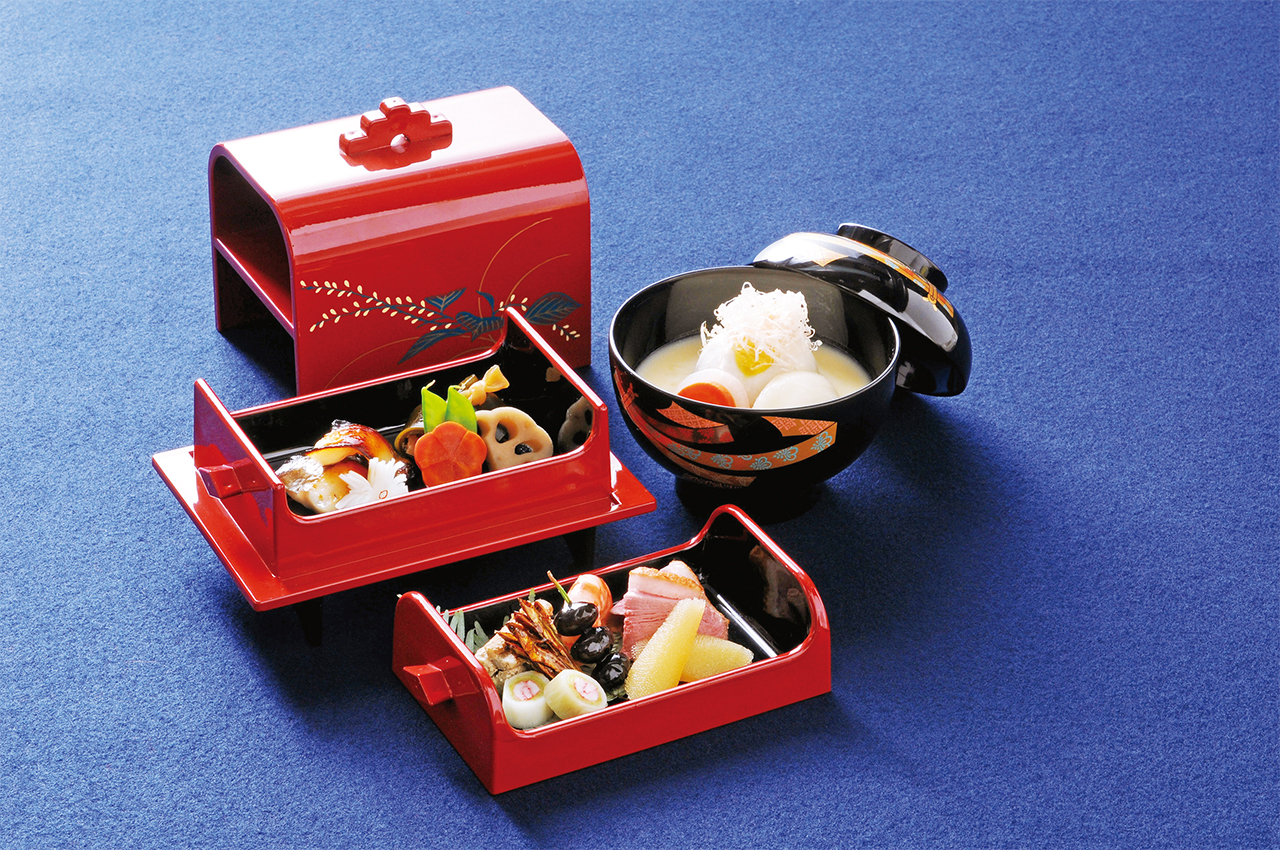4. Goho, Gomi, Goshiki, Gokan:
The Essentials of Japanese Cuisine
It is said that the important things in cooking Japanese food are Gomi (the Five tastes), Gokan (the Five senses), Goshiki (the Five colors) and Goho (the Five cooking methods).
It is the important duty of the chef to make sure that everything works well together to create a satisfying experience for customers. This can be achieved by considering season and cooking methods, by arranging beauty of appearance, and by catering to the customer’s individual preferences, as well as, by serving with a sense of hospitality and gratitude.

Goho (The Five Cooking Methods)
Japanese cooking can be broken down in to five basic cooking methods. These are "Nama"(cutting), "Niru" (simmering), "Yaku" (grilling), "Musu" (steaming) and "Ageru" (deep-frying). In standard Kaiseki-style cuisine (a traditional Japanese course dinner), these five ways are all incorporated, found usually as "Nama (cutting)" sashimi, "Niru" simmered dishes, "Yaku" grilled dishes, "Musu" steamed dishes, and "Ageru" deep-fried dishes.
"Nama" (cutting)
This method is considered of particularly high importance in Japanese cuisine. It represents one of the distinguishing features of Japanese cuisine, which, starting with sashimi, incorporates a lot of ingredients to be eaten raw. In order to cut sashimi, skillful knife control is required, as well as the ability to cut ingredients into decorative shapes that evoke the seasons and add beauty. The chef must also be able to cut the ingredients that the diners are easy to eat, depending on what ingredients they are.
"Niru" (Simmering)
This cooking method involves submerging the ingredients into "Dashi", water or liquid seasonings, and adding heat in order to make the ingredients softer and tastier.
"Yaku" (Grilling)
In this method, ingredients are cooked by being directly exposed to an open flame, or are indirectly heated with oil in a pot or frying pan.
"Musu" (Steaming)
In this method, ingredients are heated with steam inside a pot. Steaming is used in a large number of Japanese dishes, for all sorts of purposes and forms.
"Ageru" (Deep-frying)
This method involves using oil and fat to deep-fry ingredients, and high cooking temperatures of 140℃ to 210℃ allow for ingredients to be cooked in a short amount of time without any loss of flavor.
Gomi (The Five tastes)
Gomi refers to the five tastes of "Sweetness", "Sourness", "Saltiness", "Bitterness" and "Umami".
We experience just one taste when we eat something sweet, sour or salty, but there are differences in tastes when it comes to bitter foods. For example, the bitterness of chocolate and the bitterness of an onion are something quite different. Then, the fifth taste, Umami, typically includes glutamic acid, found in kombu kelp, but the taste can also be extracted from dried bonito, dried shiitake mushrooms, and shellfish. Umami is also the principle taste of dashi broth, which is an indispensable ingredient in Japanese cooking.
Goshiki (The Five Colors)
In the preparation and plating of Japanese cuisine, special emphasis is placed on the use of five colors.
Those colors are red, yellow, blue (green), white and black, and are used to express the excellence of Japanese cuisine. It is said that red and yellow are warming colors that stimulate the appetite, while blue evokes a refreshed feeling, white a feeling of cleanliness, and black creates sharp contrast in the whole.
When serving, food is plated in consideration of the dish colors, and the five colors are incorporated further through visual elements, including decorative leaves and flowers. These enhance the visual appeal of the food and make the meal more enjoyable.
Gokan (The Five Senses)
Gokan refers to the five senses of "Sight", "Hearing", "Smell", "Touch" and "Taste".
These five senses help us to recognize how delicious something is. It is important to understand that eating is not only a taste experience, but is something that we partake in with all five senses; we use sight to notice how physically attractive the food is, hearing to notice sounds from the natural world and how each morsel sounds as it is bitten, evoking anticipation and enhanced enjoyment from the food. We use the sense of smell to notice the seasons and the sense of touch when we put food in to our mouths, enjoying the sensations of the food on our tongues as part of the taste experience.
For these reasons, it is important that chef takes all kinds of things in to consideration when creating dishes.
Preparing food for others is to be able to read the thoughts of the diners to create dishes that they will enjoy. In Japanese, this level of consideration is called "Omotenashi".